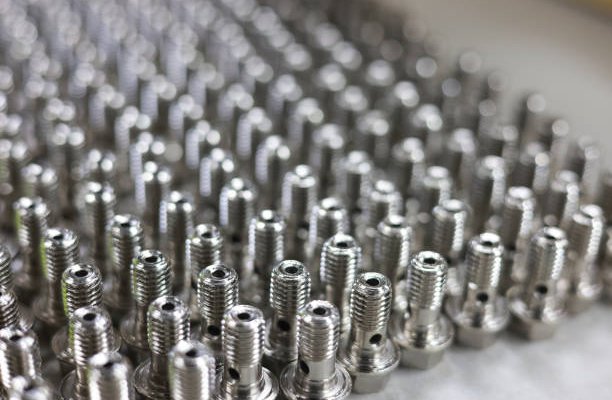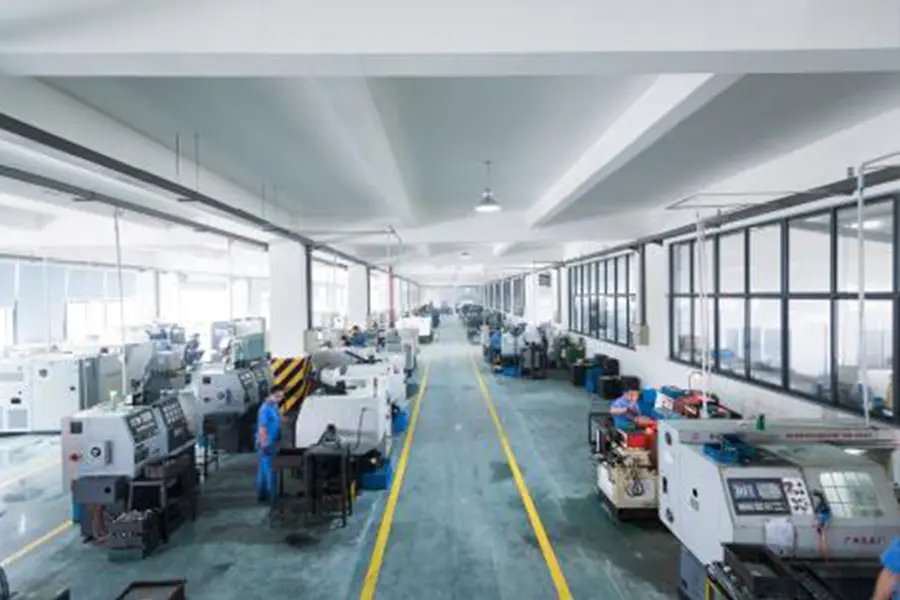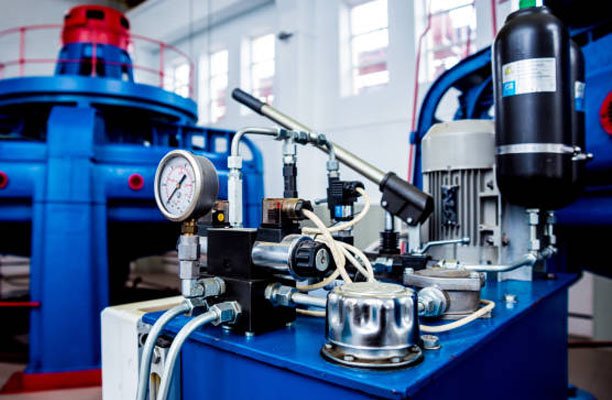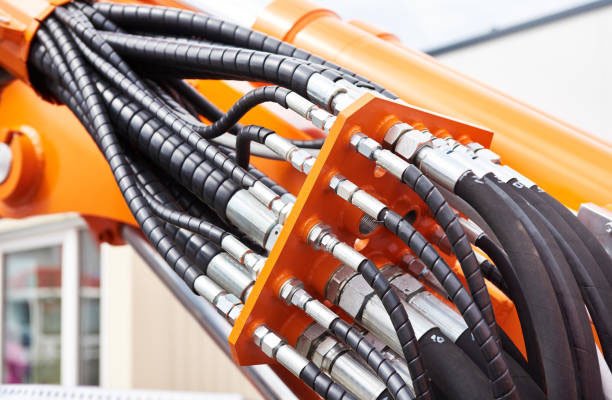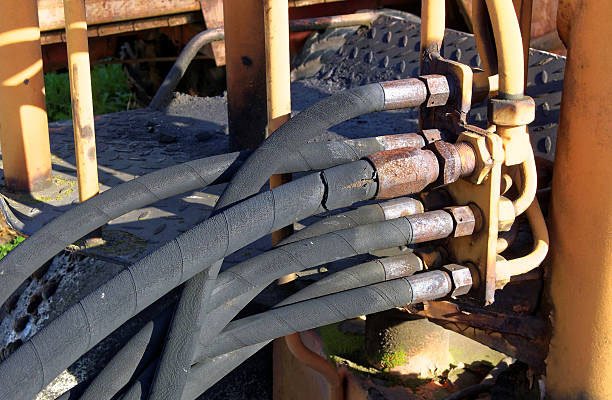Introduction
In every hydraulic system, the smallest components often make the biggest difference—and premium hydraulic fittings are a perfect example. These fittings are the unsung heroes that maintain pressure, prevent leaks, and keep machinery performing at peak efficiency. While budget options may seem appealing at first glance, the long-term costs of downtime, repairs, and safety hazards can far outweigh the initial savings. Choosing quality fittings is not just an upgrade—it’s a strategic investment in performance, reliability, and cost control.
The True Cost of Cheap Hydraulic Fitting
When we hear the word “cost,” we often associate it with price tags or initial purchase values. However, in industrial hydraulics, the true cost includes a wide array of hidden expenses that extend far beyond what you pay at checkout.
1. Downtime: The Hidden Financial Drain
A single hydraulic fitting failure can shut down an entire production line or immobilize critical machinery. That downtime isn’t just an inconvenience—it’s lost revenue, wasted labor hours, and cascading delays across projects. The savings from cheaper fittings quickly disappear when weighed against even a few hours of operational standstill.
2. Maintenance and Frequent Replacement
Lower-quality fittings are typically manufactured with looser tolerances and inferior materials. These shortcuts make them more susceptible to leaks, wear, corrosion, and fatigue. This leads to more frequent replacements, which requires repeated shutdowns, technician labor, and part sourcing. What seemed like a budget-friendly option can become a recurring expense.
3. Risk of Equipment Damage and Fluid Contamination
A failed fitting can result in high-pressure fluid bursts that not only pose safety risks but can also damage other components in the system. Fluid leakage can cause contamination, corrosion, or even fire hazards, especially in environments dealing with flammable liquids. These secondary damages inflate your costs exponentially.
What Makes Premium Hydraulic Fittings Worth the Investment
To understand why premium fittings cost more, it’s crucial to look into the materials, design standards, and quality assurance processes that set them apart from lower-tier alternatives.
1. Superior Materials for Maximum Durability
Premium fittings often use high-grade stainless steel, plated carbon steel, or specialty alloys. These materials provide superior resistance to corrosion, temperature extremes, and chemical exposure. In harsh industrial or outdoor environments, this durability is essential to maintaining seal integrity and pressure retention.
2. Precision Engineering and Tight Manufacturing Tolerances
High-quality fittings are manufactured to exacting standards. Precision threading, consistent sizing, and proper surface finishes ensure leak-proof connections and compatibility with a wide range of hoses and machinery. This engineering excellence reduces the chance of cross-threading, misalignment, and premature failure.
3. Certifications, Compliance, and Performance Guarantees
Reputable manufacturers submit their fittings to rigorous testing and certification processes that align with ISO, SAE, or DIN standards. These certifications validate burst pressure ratings, fatigue resistance, temperature tolerance, and material composition. For mission-critical applications, these assurances provide peace of mind and minimize liability.
Risks Associated With Using Low-Quality Fittings
Opting for cheaper fittings might seem like a harmless compromise—until something goes wrong. These budget components carry several operational and financial risks that can quickly escalate.
1. Incompatible Connections and System Failures
Cheaper fittings often lack compatibility with standardized hose and port connections. Even small discrepancies in thread pitch or sealing surfaces can lead to misfits, leaks, and pressure drops. This not only degrades system efficiency but can also cause catastrophic failure under high pressure.
2. Shortened Service Life in Harsh Environments
Economy-grade fittings struggle in environments with high vibration, chemical exposure, or thermal cycling. Their lower resistance to wear and fatigue shortens the lifespan significantly, requiring earlier replacement and disrupting system continuity. In the worst-case scenario, failure occurs mid-operation, leading to unplanned downtime.
3. Safety Hazards and Regulatory Non-Compliance
Hydraulic fluid under pressure can cause severe injuries, including fluid injection injuries that require immediate medical intervention. Cheap fittings are more prone to rupture or blow-off incidents, posing a direct threat to operator safety. Additionally, low-grade components may not meet industry regulations, opening the door to compliance violations and legal liabilities.
How to Identify High-Quality Hydraulic Fittings
Choosing premium fittings requires a keen eye for engineering detail, material selection, and supplier reputation. While all fittings might look similar at first glance, there are key traits that separate reliable components from substandard ones.
Material Markings and Grade Identification
High-quality fittings are often stamped or engraved with detailed markings indicating size, pressure rating, material type, and manufacturer identification. These marks are not just cosmetic—they’re your assurance of traceability and compliance. Lack of clear markings is often a red flag.
Pressure Ratings and Burst Strength Certification
Premium fittings will clearly specify maximum working pressure and burst strength based on rigorous testing. These numbers should comfortably exceed your system’s operating pressure, ensuring a safe margin during pressure spikes or temperature fluctuations.
Fit, Finish, and Machining Quality
Inspect the fitting’s surface. A clean, polished finish without burrs, scratches, or inconsistent threading is a sign of precision manufacturing. Cheap fittings may have rough machining, poorly formed threads, and loose tolerances, all of which increase the likelihood of leaks and failure.
Reputation of the Manufacturer
Reliable manufacturers are well-known in the hydraulic industry. They often provide performance guarantees, customer support, and detailed product documentation. Choosing parts from a trusted brand reduces the risk of receiving inferior, off-spec products.
Long-Term Financial Advantages of Premium Fittings
Upfront cost savings from cheap hydraulic fittings can quickly be overshadowed by the long-term expenses they bring. Investing in premium fittings, on the other hand, offers a variety of financial and operational benefits.
Fewer Replacements and Maintenance Intervals
High-quality fittings maintain integrity under high-pressure cycles and harsh environmental conditions, meaning fewer replacements. This reduction in downtime and labor costs results in more consistent operations and fewer service calls.
Increased Equipment Uptime and Productivity
Reliable hydraulic fittings reduce unexpected failures, which translates to fewer breakdowns, fewer lost hours, and more consistent machine availability. Over time, this operational efficiency leads to greater throughput and project consistency.
Reduced Fluid Loss and Energy Waste
Leaks from low-quality fittings don’t just cause messes—they result in the loss of expensive hydraulic fluid and system pressure. Maintaining tight seals preserves energy efficiency, reduces operating costs, and improves system performance.
Risk Reduction and Fewer Liability Incidents
Investing in fittings that meet industry safety standards helps mitigate the risk of accidents, injuries, and equipment damage. This protects your workforce, avoids costly legal exposure, and maintains your brand’s professional reputation.
Situations Where Standard Fittings May Suffice
While premium fittings are ideal for high-stakes applications, there are scenarios where mid-grade or even basic fittings may be acceptable, especially if the application involves low pressure or temporary setups.
Low-Pressure, Non-Critical Applications
If the hydraulic system is operating at lower pressures and the consequences of failure are minimal—such as in testing rigs or light-duty tasks—a standard-grade fitting might be sufficient.
Short-Term Installations and Temporary Systems
For systems that are only required for a short period or won’t be used under extreme conditions, it may make sense to use cost-effective components. This is common in research prototypes or event-based machinery that won’t see heavy usage.
Easily Accessible Locations
In cases where the fitting is easy to access and replace—without interrupting major operations—a standard fitting could be a practical choice. Maintenance is simpler, quicker, and doesn’t carry the same operational risk.
However, even in these scenarios, choosing fittings from reputable manufacturers is still important. Sacrificing quality entirely should never be the option, as even non-critical systems can escalate into major issues if improperly equipped.
How to Justify Premium Fittings to Management or Clients
In many organizations, purchasing decisions are driven by cost considerations—often with a focus on the immediate bottom line. To advocate for premium hydraulic fittings, you’ll need to present a compelling business case that speaks the language of return on investment (ROI), risk reduction, and operational efficiency.
Total Cost of Ownership (TCO) Comparison
Break down the long-term costs associated with standard vs. premium fittings. Factor in labor hours for installation and replacement, frequency of component failure, downtime losses, and the financial impact of possible system failures. A clear TCO chart can visually demonstrate that what seems expensive up front is actually more economical over time.
Risk Mitigation Strategy
Highlight the potential consequences of a failure—especially if your system supports heavy equipment, production lines, or safety-critical operations. Show how premium fittings reduce risks such as fluid leaks, environmental contamination, and workplace injuries. This approach often resonates with legal, compliance, and operations teams.
Productivity and Reliability Metrics
Use historical performance data if available. If your team has dealt with fitting failures in the past, quantify the time and money lost. Then, project what improved uptime and reduced incidents would look like with premium components. Data-driven storytelling helps decision-makers see the operational benefits beyond the price tag.
Alignment with Safety and Compliance Standards
Explain how premium fittings often help ensure compliance with industry regulations and safety standards. In industries such as oil and gas, construction, or mining, compliance is non-negotiable. Choosing fittings that meet or exceed these standards supports company-wide compliance efforts.
Case Scenarios That Show the Real Value of Premium Fittings
Real-world examples provide powerful context. Here are a few hypothetical but representative scenarios that illustrate the advantages of investing in high-quality hydraulic fittings.
Manufacturing Line Shutdown Avoided
A large manufacturing facility once used low-cost fittings to save on costs during an equipment upgrade. Within two months, recurring leaks caused three unplanned shutdowns. Each shutdown lasted two to four hours and cost the business approximately $20,000 in lost productivity per hour. After switching to premium fittings, the system ran continuously for over a year without incident.
Construction Site Hose Failure
On a construction site operating heavy-duty excavators, a low-grade fitting failed under high pressure, causing hydraulic fluid to spray across the machine cabin. Fortunately, no one was injured, but cleanup, environmental impact mitigation, and machine repair added up to over $12,000. After retrofitting with premium fittings rated for high-pressure cycles, similar equipment operated safely and efficiently, even under harsher conditions.
Agricultural Machinery in Harsh Environments
An agricultural contractor used budget fittings on their sprayers and tractors. In regions with high humidity and pesticide exposure, corrosion set in rapidly, causing system inefficiencies. Switching to stainless steel fittings reduced corrosion-related failures by 80% and extended component service life by over 300 hours, dramatically lowering replacement costs and machine idle time during harvest season.
Key Features to Look for in a Premium Hydraulic Fitting
Not all “expensive” fittings are necessarily premium, and not all “affordable” fittings are poor quality. To make an informed decision, know what features distinguish high-quality hydraulic fittings.
Robust Corrosion Resistance
Premium fittings should offer strong protection against corrosion, especially if used in marine, chemical, or outdoor environments. Look for coatings such as zinc-nickel plating, stainless steel construction, or specialized surface treatments.
High Working Pressure and Burst Ratings
Verify that the fittings can comfortably handle the pressure range of your system. High-quality components will often include a wide margin between working and burst pressures, providing a greater safety buffer.
Leak-Proof Design with Tight Seals
Check for precision-machined threads, reinforced seals, and compatibility with O-ring face seal (ORFS), flare (JIC), or other reliable sealing technologies. These minimize the chance of leaks even under dynamic loads and pressure fluctuations.
Thermal and Chemical Resistance
If your system operates in extreme temperatures or handles aggressive fluids, make sure the fitting materials and seals are rated for those conditions. This ensures durability and operational stability even in unpredictable environments.
Traceability and Certifications
Premium fittings usually come with batch traceability, quality certificates, and clear documentation. This is particularly important in regulated industries, where product failures can lead to audits, fines, or litigation.
Comparing Premium vs. Economy Fittings: A Strategic Framework
To make smart purchasing decisions, it’s helpful to establish a comparison framework. This allows you to analyze fittings not just on price but on performance, reliability, and value over time.
Performance Criteria
Premium fittings typically maintain consistent performance under full load, during repeated cycles, and in varying environmental conditions. They’re engineered to operate with minimal pressure drop and leak risk, whereas economy options often degrade faster under similar stress.
Installation and Compatibility
Top-tier fittings are easier to install and remove due to tighter manufacturing tolerances. Their precision ensures proper threading, reduces misalignment issues, and supports seamless integration with OEM components. Economy fittings may require force-fitting or re-threading, which introduces unnecessary risks.
Service Intervals and Lifespan
A high-quality fitting may last multiple service cycles without replacement, while a low-cost one might need swapping after one or two maintenance rounds. Over the life of your equipment, this leads to considerable time and cost savings.
Support and Warranty Coverage
Many premium fitting manufacturers back their products with extended warranties, dedicated technical support, and readily available documentation. Economy suppliers may offer little recourse in the event of failure, which can leave your team exposed during critical operations.
Making the Smart Choice: Premium Fittings as Long-Term Assets
The decision to invest in high-quality hydraulic fittings should be viewed as an investment in your equipment’s overall performance, safety, and reliability. While the initial price tag may raise eyebrows, the long-term benefits far outweigh the cost—especially in high-pressure, high-duty, or hard-to-reach systems.
Strategic Asset Protection
Your hydraulic system is only as strong as its weakest component. Fittings are often that point of failure when budgets dictate choices. By prioritizing quality, you reduce the weak spots in your system and extend its service life.
Enhanced Brand and Equipment Reputation
For OEMs, contractors, or fleet managers, using premium components reflects positively on your equipment’s perceived quality. Machines that require fewer repairs, experience fewer failures, and maintain consistent uptime build trust with clients, operators, and buyers alike.
Sustainability and Waste Reduction
Fewer replacements, less hydraulic fluid loss, and lower part turnover contribute to environmental responsibility. This matters not only from a regulatory perspective but also as part of many organizations’ long-term sustainability goals.
Conclusion
In the complex, high-pressure world of hydraulics, fittings are far more than mere connectors—they’re critical components that affect safety, performance, and profitability. While economy-grade fittings may be tempting in the short term, they often lead to long-term consequences: downtime, fluid loss, maintenance headaches, and safety risks.
Investing in premium hydraulic fittings isn’t just about buying better parts—it’s about securing better outcomes. The improved durability, reduced failure rate, ease of maintenance, and risk mitigation make high-quality fittings the smarter, more strategic choice. Whether you’re running a single machine or an entire fleet, remember: in hydraulics, quality always pays off in the long run.
FAQs
Q1: Are all stainless-steel fittings considered premium?
Not necessarily. While stainless steel is a sign of corrosion resistance, the quality of machining, pressure rating, and certification standards still determine if a fitting is truly premium.
Q2: What industries benefit most from using premium fittings?
Any industry relying on hydraulic systems—construction, agriculture, oil and gas, manufacturing, mining—can benefit, particularly those facing harsh environments or requiring high uptime.
Q3: How often should hydraulic fittings be replaced?
This varies by quality, application, and usage conditions. Premium fittings can last significantly longer, sometimes remaining serviceable through multiple maintenance cycles, whereas economy fittings may fail sooner.
Q4: Can I mix premium and budget fittings in the same system?
It’s not advisable. Mixing components with varying tolerances, sealing characteristics, and materials can lead to leaks, compatibility issues, and accelerated wear.
Q5: Are there standards I should check before purchasing fittings?
Yes. Look for compliance with SAE, ISO, or DIN standards, as well as clear labeling of pressure ratings, thread type, and material composition.

